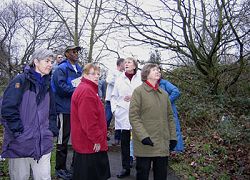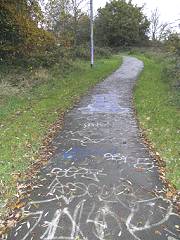Summary
Summary
How do worries about crime and safety stop people using woods and parks?
In 2004 Forest Research organised a one-day seminar with backing from Lancashire Constabulary, CABE Space and English Nature. The event explored how crime and safety affect people’s use of woodlands and natural spaces.
Forest Research organised the workshop following significant research findings and local action in this area:
- Efforts to manage and deal with anti-social behaviour to encourage users to enjoy available spaces
- Worries that people’s perceptions of their own safety in woodlands is disproportionate to any actual risk
- Need for advice to landowners concerned about issues of liability when providing public access
- Growing recognition that good design in woodlands and natural spaces helps to reduce real and perceived dangers
Key themes
- Risk perception: perceptions of risk affect woodland access and how people behave – for example women feel at greater risk and may not visit woodland alone
- Exclusion: anti-social behaviour (dumping rubbish, shouting abuse, graffiti, etc) – or simply behaviour that excludes others – deters people from visit areas where they perceive potential for trouble
- Liability: woodland owners worry about the liabilities and risks involved in opening up their land to public access, although there is little evidence of serious incidents leading to insurance claims
- Location and design: lived-in, well managed woodlands near to where people live can provide inclusive access and tend to attract less anti-social behaviour than unmanaged woodlands

Publication
Funding and partners
Co-funded by Lancashire Constabulary, CABE Space and English Nature.
Status
Completed in 2004.
Contact
General Content
Related pages
- Evaluating the impact of trees, woodland and forests on quality of life
- Evidence review: Equality and inclusion of social diversity with respect to woods and forests in the UK

